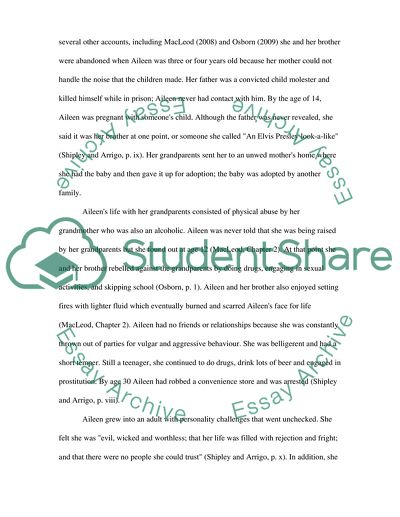Cite this document
(“The Case of Aileen Wuornos Essay Example | Topics and Well Written Essays - 3750 words”, n.d.)
Retrieved from https://studentshare.org/law/1554026-case-study-report-the-case-of-aileen-wuornos
Retrieved from https://studentshare.org/law/1554026-case-study-report-the-case-of-aileen-wuornos
(The Case of Aileen Wuornos Essay Example | Topics and Well Written Essays - 3750 Words)
https://studentshare.org/law/1554026-case-study-report-the-case-of-aileen-wuornos.
https://studentshare.org/law/1554026-case-study-report-the-case-of-aileen-wuornos.
“The Case of Aileen Wuornos Essay Example | Topics and Well Written Essays - 3750 Words”, n.d. https://studentshare.org/law/1554026-case-study-report-the-case-of-aileen-wuornos.


